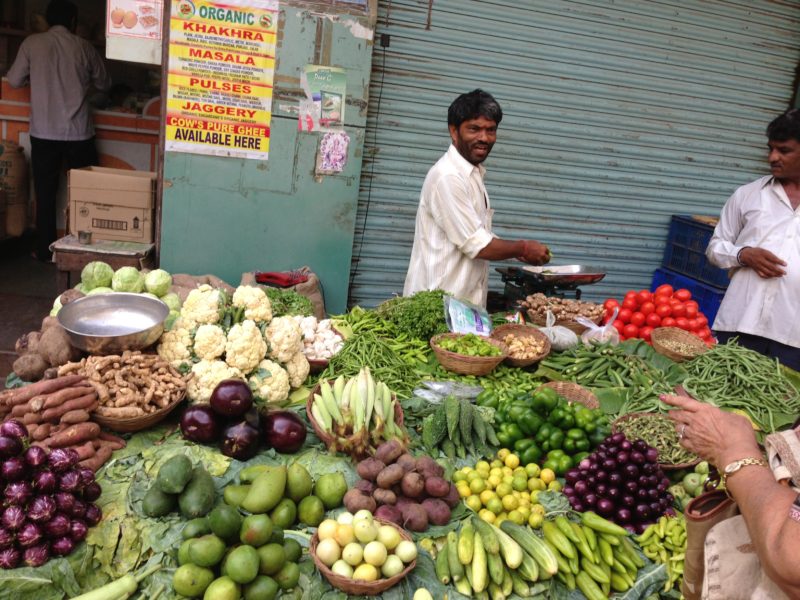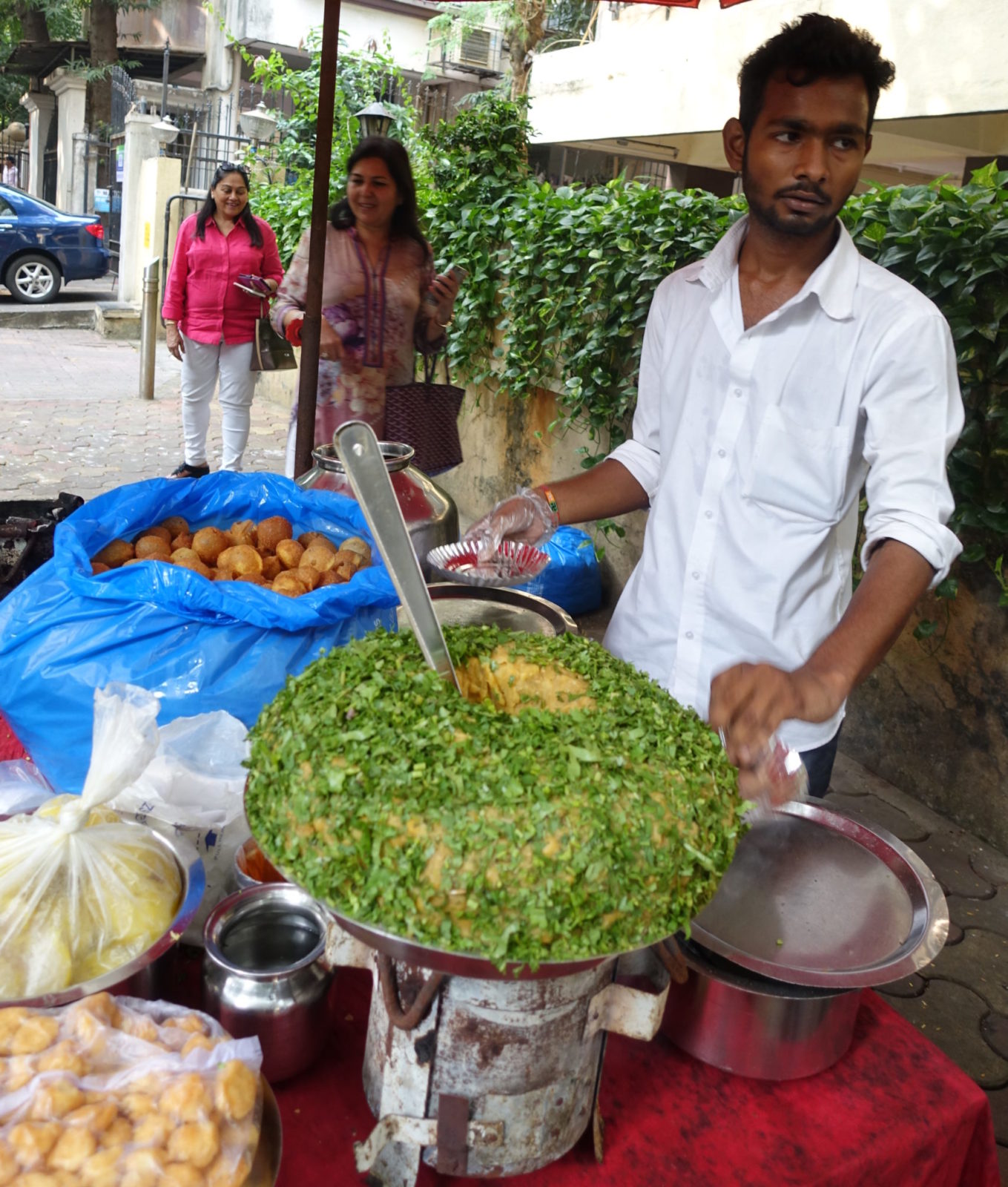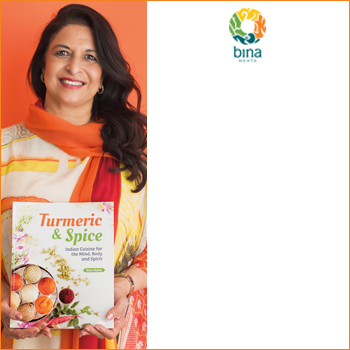As Americans broaden their culinary horizons more and more, a very popular trend is “street food” from all cultures. Indian street food, or chaat, has recently been on the radar. I had a chat about chaat with Bina Mehta, who was born and raised in India.
When I say “chaat,” what comes to mind?
Bina: Chaat refers to the delightful, delicious variety of foods sold on the streets of India. It is mm, mm, mm, finger licking good! The word “chaat” means “to lick.” When you mention chaat to Indian people, they go into a frenzy and are like, oh, I want chaat, and I want it now! That’s what it means to me. The closest comparison I have to explain what chaat is is the word “appetizer.” Chaat includes both savory and sweet snacks, meat, vegetarian, and vegan, and beverages such as chai.
What are some types of chaat commonly sold on the streets of India?
Bina: You will find pani puri, which is fried dough balls stuffed with potatoes, sprouts, and chutney; aloo chaat, which is fried potatoes with spices; dosas, which are thin pancakes or crepes made with rice and lentils; and chutneys galore! Chutneys are one of the main ingredients served with chaat.
My cookbook Turmeric & Spice includes chutney recipes that use fresh herbs like mint and cilantro, which excite the senses with amazing aromas and flavors. Tamarind and date chutney is sweet and sour. The cilantro and serrano chutney is spicy. There is green mango chutney which has a little bit of tanginess with lemon juice. There are countless varieties and recipes for chutneys that correspond to the different regions of India and what ingredients are seasonally available.
What is so appealing about chaat?
Bina: Chaat has a complex combination of flavors—hot, sour, sweet, tangy, spicy—that puckers your mouth and excites your senses. So you can imagine, there’s a wide range of flavors there that correspond with our tongues and the six tastes of Ayurveda: sweet, sour, salty, bitter, pungent, astringent. Your mouth experiences an onslaught of flavors and leaves you wanting more and more. It’s like something in your brain triggers, and even after you’re full, you’ll want more. You’ll crave more!
What is your earliest memory of eating chaat in India?
Bina: That is a very fun question for me! When I was growing up in India around, I would say, about age six or seven, one of the things we would do is in the afternoon around three or four o’clock, we would go down to the street corners where they had the chaat, and we would sit there eating pani puri. It was the cheapest thing you could buy and still is. When I was older and could go by myself, me and five or six girls would take our money and go spend it all on chaat.
Where do you find chaat in India?
Bina: On street corners, at railway stations, in front of theaters and on beaches. There is a variety of chaat based on regions and what is available. The chaat reflects the landscape and the culture of each region, and you can see this as you travel on the trains from the north to the south.
Chaat is sold in restaurants also, but it’s more fun to go out and discover the chaat, say, on the beach if you’re there for the day. The people selling chaat come and set up their stalls and crowds gather, often waiting in very long lines for these foods. There are also ice cream or “juice centers” where they have fresh squeezed juice drinks.
Also, chaiwalas, or chai vendors, are central to chaat culture. There are “chaat gullys” where streets are lined with 30 or 40 food stalls selling chaat. These gullys are in the heart of financial districts. I remember my father’s office was near a chaat gully and for lunch they would send someone out to get the chaat they wanted.
Wow, I can’t imagine choosing only one! What would you say your favorite chaat is, first savory and then sweet?
Bina: Oh, that is such a difficult question because there are so many I love, but I would say Pani Puri is my favorite savory chaat. It has complex flavors and is so much fun to eat. It’s an experience beyond eating! As for my favorite sweet chaat, I absolutely love rasmalai, a cold dessert of paneer cheese that has been soaked in milk, sugar, and saffron and is served in a sweet flavored milk mixture.

Why is chaat so popular and important to Indian culture?
Bina: There are several reasons. First of all, very poor people can become successful chaat vendors without a big investment. Chaat has been sold on the streets of India for centuries. It is found everywhere and is inexpensive and delicious. It is also very fresh because the vendors use the ingredients immediately available, and this varies by region. Chaat also appeals to every diet, whether you are a meat eater or a vegan.
What advice do you have for foreigners about enjoying chaat in India?
Bina: Well, if you are visiting India, unfortunately, you can’t eat whatever you fancy. If you don’t know the source or quality of the water used for cooking, you don’t want to eat it because you can get very sick. This would be the advice to any foreigner traveling to India.
When I was living there, I was able to eat anything because of the immunity I had. But now after living in the US for decades, I have lost that immunity and can only eat cooked dishes—nothing raw or cold. But there are plenty of cooked foods available in chaat stalls for you to enjoy. You will still get the cultural experience that can only be found in India. And if you want to enjoy the flavors of chaat, it can be done at home.
How can a home cook recreate the flavors of chaat in their own kitchen?
Bina: You can find many flavors and recipes for chaat in my cookbook, Turmeric & Spice. I have an entire chapter dedicated to street food, and I have also incorporated some chaat dishes with my menus. I have many recipes for chaat including Pani Puri, Aloo Chaat, Dosas, Samosas, and more. I also have several recipes for chutneys, which are so much fun to make and can be eaten with any dish.
Once you have gathered the necessary ingredients, you can make any chaat. If you don’t want to search for the special ingredients that are required to recreate these flavors, you can use my gourmet spice blends which contain the unique spices of Indian cuisine.
The most time-consuming part of making chaat in your own kitchen is the prep. You may want to do some fermenting or sprouting, so that takes planning. There are often many vegetables to chop, meats to grill, and dough mixtures to make for dosas and samosas. There are many different ingredients and steps, and the presentation may seem daunting, but my cookbook Turmeric & Spice guides you step by step in making many of these tongue-tantalizing street foods so that you can create your own chaat stand at your own dining room or kitchen table.


